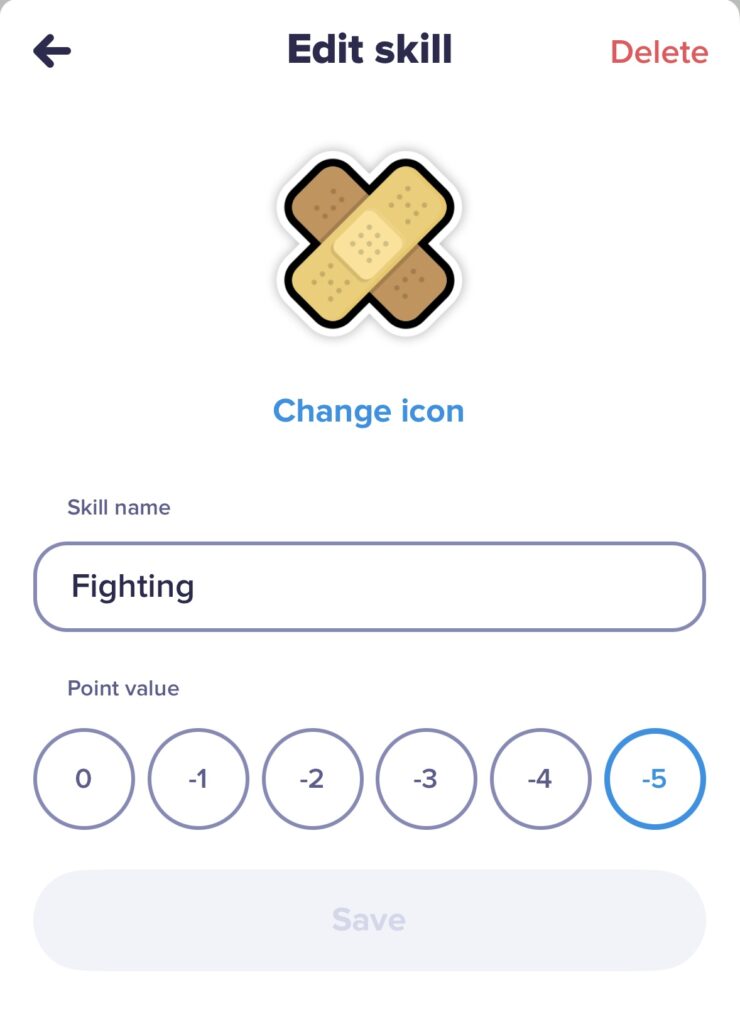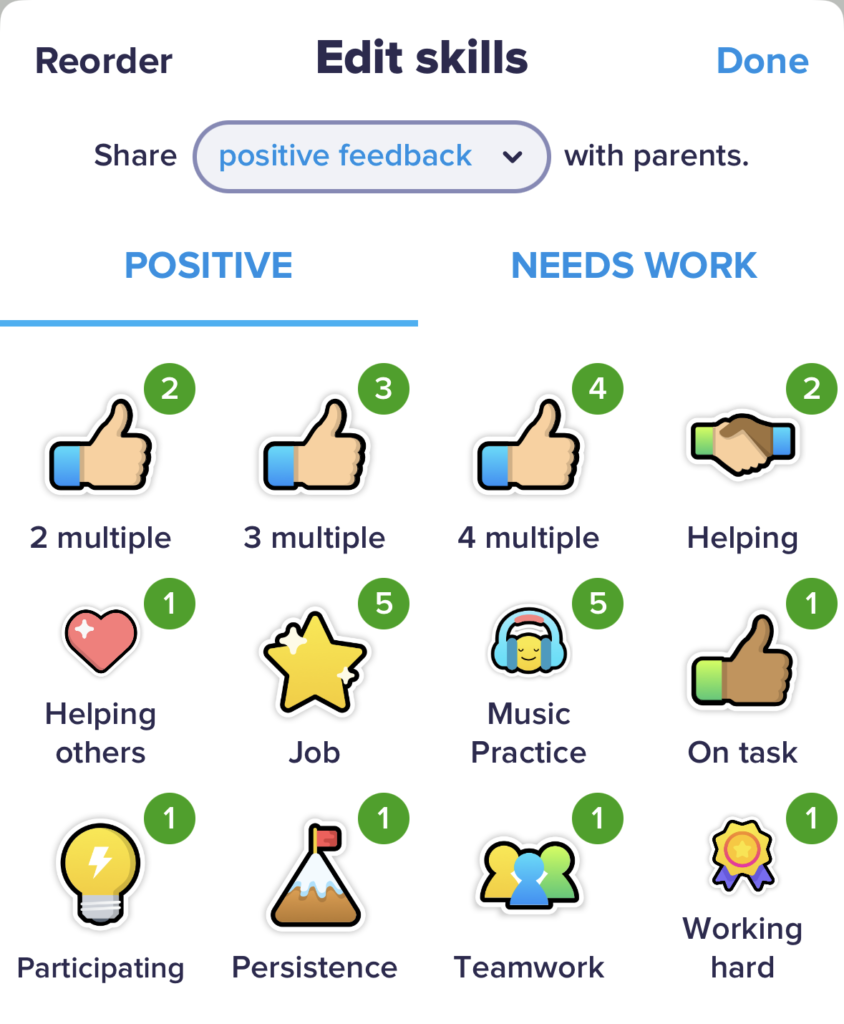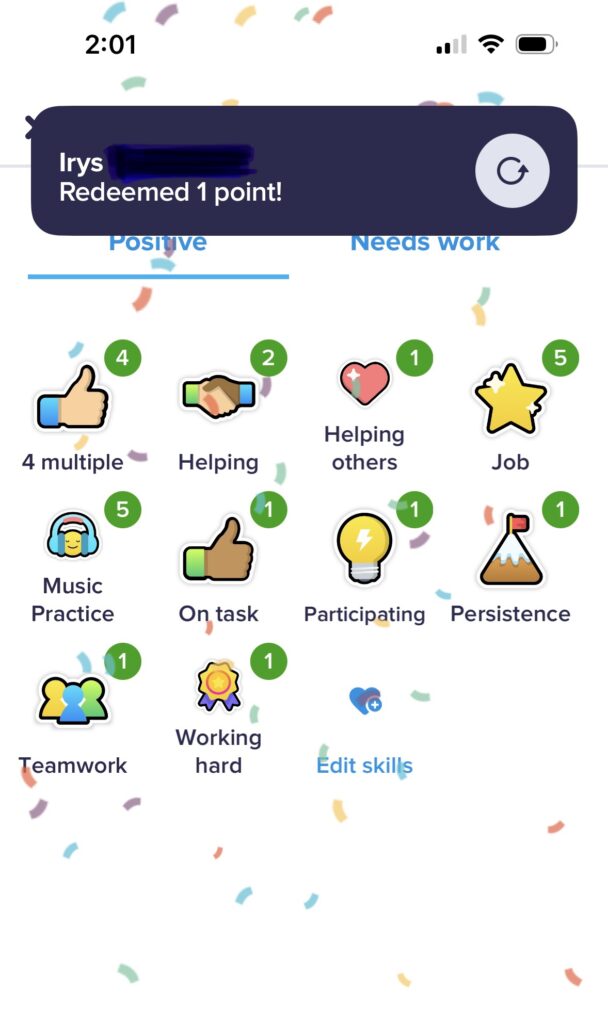After school the kids come home, throw their backpacks on the floor, plop on the couch with a snack and plug into their electronics of choice. The house is a mess, we’re all exhausted from working all day and dealing with the daily grind.
Thinking, “if only the kids could just empty the dishwasher without having to fight them for it… is it even worth the energy to have that battle or should I just do it myself?”

“Why won’t you listen to me???” “Why won’t my kids listen to me??” This is such a common question parents constantly ask their kids, and themselves. To be honest there are so many different reasons why, but I’m not going to focus on that. I’m going to focus my energy on equipping you with a trick I learned as a teacher, that works wonders as a parent, better yet, it’s free!
Kids love rules???? Yes!

Kids love working with structure, solid routines, and enforced rules and guidelines, in fact, they thrive in these environments. They feel safe and in control because they know what to expect. They know that if they break a rule, a consequence will ACTUALLY be enforced.
When they truly believe in the efficacy of the rules and routines, they no longer feel the need to push the boundaries anymore, they know where that solid boundary is. Of course, there are always exceptions, but for most kids this is true.
Free app to save the day
I used a free app in my classroom that allowed me to enforce the rules, create habits of behaviors I wanted my students to do more and fizzle out unwanted behaviors. Better yet, my students were always excited to participate because they were allowed to earn points that they could later spend on things or activities they wanted.
Find out what kids will work for
In school I had a list of free activities they were allowed to spend their points on like, “sit by a friend, wear their pajamas to school, or use the teacher’s chair for a day.”
At home we have a discussion on what my kids want to work towards. They usually choose dinner or lunch out, date at the fancy playground in town, or a movie night with the works (popcorn, candy and a fancy drink). I could go on and on about things kids will work for, but that will be saved for another day.
Reflection before Implementation
Before jumping into the routine, I sit down with my kids and have a discussion on my concerns, and how things are working or not working. I invite them join in with ideas on how we can improve as a family to make things smoother, and happier for everyone. Usually kids will say things like, “be good, be nice, pick up my toys,” which is great they’re thinking about solutions.
Invitation
Then I tell them, “I was thinking…….. about letting you guys earn points that you can use like money to buy things you want…when you “be good, be nice, and pick up your toys?” This usually gets their attention. This is the “buy-in” point that is required for children to cooperate.
Introduction
At this point I introduce Class Dojo and show them how they can create their own accounts with their own dojo monster that they can use to post things in our “home classroom” and they can even play together in the Dojo game that is like a simple and cutesy version of Minecraft, called “Dojo Islands.” ……And……I’ve got them hooked.
Steps to unlock your parental power… ready?
1. Go to ClassDojo
2. Click on get started OR sign up as “TEACHER” (The interface is a little different depending on the device you’re using.)
3. Then you enter your email address and create your account.
4. Once you verify your email, you’ll be asked to find the school you work at. Click “I don’t teach in a school,” at the bottom of the screen.
5. Click “Get the app.”
6. Once you have the app, you’ll need to “add class.” Choose a name and grade for your family. I called us, “Mountain school,” lol, and chose 3rd grade.
7. You can choose co-teachers, if you have anyone else that will be giving and taking points. If not, then choose, “I don’t have co-teachers.”
8. Now you add the first and last names of each of your kids and click next. It will look like this afterwards with cute baby monster eggs waiting to hatch.

9. If you want to have anyone else see any notifications, you can “connect families” by adding their phone numbers or email. You can always do this later.
Now you have Class Dojo set up, here’s where the fun begins.
Create “Skills” for Points

1. Click the three dots in upper right corner, or on one of your kids’ monsters, then “edit skills.” You’ll see a list of items that have a number assigned to them. These are the standard points but you can customize them to suit your family’s needs.
2. Click “Edit Skills” then “Add skill“
Here you can choose an icon that represents a common behavior and the point value up to 5 points, then click “add skill” when finished.
For example, I chose the “Gold star,” named it “Chore” and gave it a value of 5 points. I explained that my kids can earn this if they finish a complete job all alone without help.
3. This will take you back to the “edit skills” page.
Notice the blue line under the “POSITIVE?” Go to the right and select the “NEEDS WORK.”
Continue creating a few more items you want to use but keep it simple!!

Here you can build ways your kids will lose points the same way you created the positive points. I used the “bandaids,” named it “fighting” and gave it a value of -5 points.
Tip: I’ve even just labeled some “multiple points” and assigned the various point values so I can use them as needed without specifying exactly how my kids earned them. Less is more, keep it simple!

Redeem points

When your kids are ready to redeem their points…
1. click on their avatar/name
2. click “profile” then
3. “redeem”
You’ll enter how many points they’re using and what they earned. Make sure your kids are there when you do this because it’s exciting for them to watch the confetti. It always gives them all a little more motivation.
Getting kids involved
Your kids can create their own avatar monster, play “Dojo Islands” together, and create and post drawings and comments by connecting to your Class Dojo account.
1. Click the three dots in the upper right-hand corner
2. click “connect students,”
3. click “In class login“
(While you’re doing this, have your kids go to https://www.classdojo.com/ and choose the method you want to use: QR Code or Text Code).
4. Agree to terms,
5. then you’ll be given a QR code for your kids to scan, OR you can click “text code” that they can enter when they log in.
Once in, they will find their own name and begin exploring the app.
Bonus Resources
Click the left arrow in upper left corner, it will take you out to the main screen. Scroll down to the bottom where it says “teacher resources.”
Here are a ton of resources that teachers can use, or you can use how you see fit. You can customize your kids’ dojo monsters, print out coloring pages, and more.
My Favs
I personally love using “big ideas” found at the very bottom, in the menu under “Resources.”
This is a collection of social-emotional learning (SEL) mini lessons featuring Mojo, the main monster from Class Dojo. He goes through experiences that help him learn how to be a better monster, and process issues and feelings.
Some topics are “growth mindset, empathy, and respect.” My students and my own children love these lessons, and understand the concepts being taught.
How to successfully implement this routine into your home
1. Set expectations

Kids need to know the ground rules. I like discussing these with my kids so they feel like have a voice in the operation. I show my kids and students the “skills” they can do to earn points, and also the ways they’ll be losing points. If they have suggestions, listen and validate their ideas.
2. Begin Immediately
Start right now, even if you don’t completely feel comfortable yet. Kids know how serious you are about something. If you wait to start after you introduce the program, kids will blow it off.
3. Pour on the praise and rewards (at first)
The first few days to a week need to be full of praise and points given for EVERY… LITTLE …THING they do that you want them to do. Later on, you won’t have to give as many points as often once they get into the habit of doing what they need to.
This sounds crazy, because as adults we feel like kids should do things because they’re supposed to, like, come on… why do you need to put the empty chip bag back in the cupboard???? AGAIN???? Seriously, why won’t my kids listen to me? Well, kids think differently than we do, and need to be taught to be consciously aware of their behavior.
This heavy boat-load of praise accompanied with giving points is teaching our kids to do certain behaviors. (Yes, there is a positive bell sound…Pavlov anyone???)
“One point to Jayla for listening the first time. (ding)”
“One point to Tommy for helping his sister tie her shoe. (ding)”
They get excited when they hear the sound of the points they earned racking up in their “Dojo bank account.” Doing this also teaches them that it IS TRULY POSSIBLE to earn enough points for something they really want.

4. Take points with caution
At the same time, in order to really hone-in on developing those wanted behaviors, it is crucial to allow our kids to hear the negative sound and process how it feels to lose points as well. They begin to develop an awareness of the feelings associated with certain behaviors.
WARNING Taking points can be devastating for some kiddos, but it is very effective.
USE IT CAREFULLY.
If an adult takes more points than they give, this is detrimental to the entire operation, and possibly your relationship. Depending on the child, it could make them feel incompetent, unempowered and that the adult is untrustworthy.
Always give more points than taking them. I recommend giving at least 10 points to taking 1. This way your child will feel empowered and then start to do things to try to make you proud. They’ll start waiting for you to ask them to do something. They’ll start listening to you. Let me repeat that, they’ll start listening to you!
Kids want to be noticed, appreciated, their voices heard, and understood. Just like we do when we work so hard at our jobs. This is a tool to help them feel appreciated while learning respect and responsibility.
5. Check point status and spend the points regularly
Decide on a time or day that works for your family. In school, we did this on Fridays. At home, we also do this on Fridays, but I am a little more lenient on showing my kids their points when they ask (since I have a lot less kids at home than students).

Checking points allows kids to reflect on their progress. It also gives them a boost in motivation to earn more points, especially if they’re close to earning their reward.
Allowing children to spend their points often, gives them the opportunity to make a choice based on instant gratification, or develop the skill to wait and save for a bigger and better reward. Either way, it’s their choice to make, and they’ll get to experience the outcome.
Wrap it up
Using Class Dojo at home teaches children responsibility and gives them an idea about working to save (money) for wants and needs. It also gives us an opportunity to relate with our children and a chance to connect with them. Win-Win.

Add a Comment